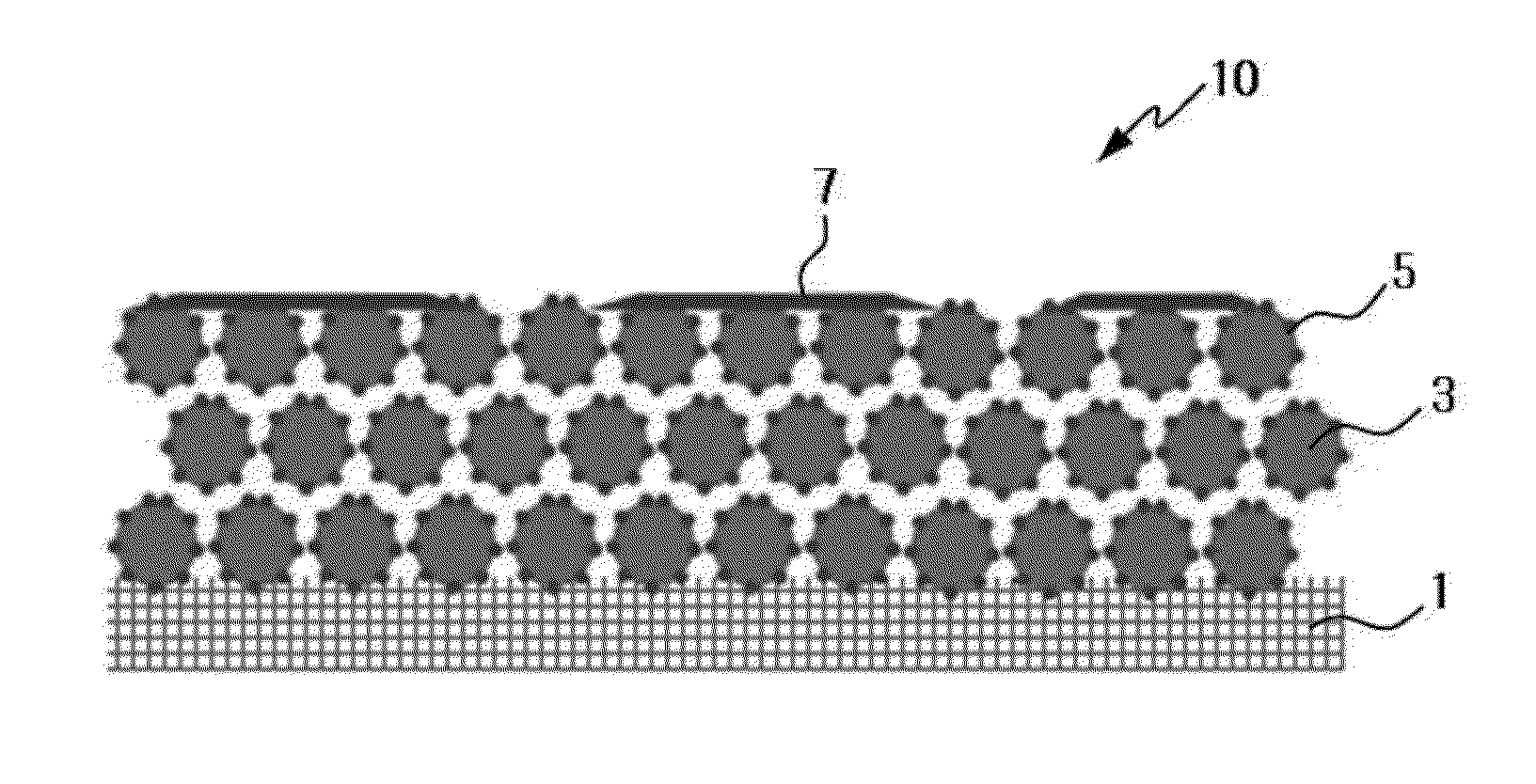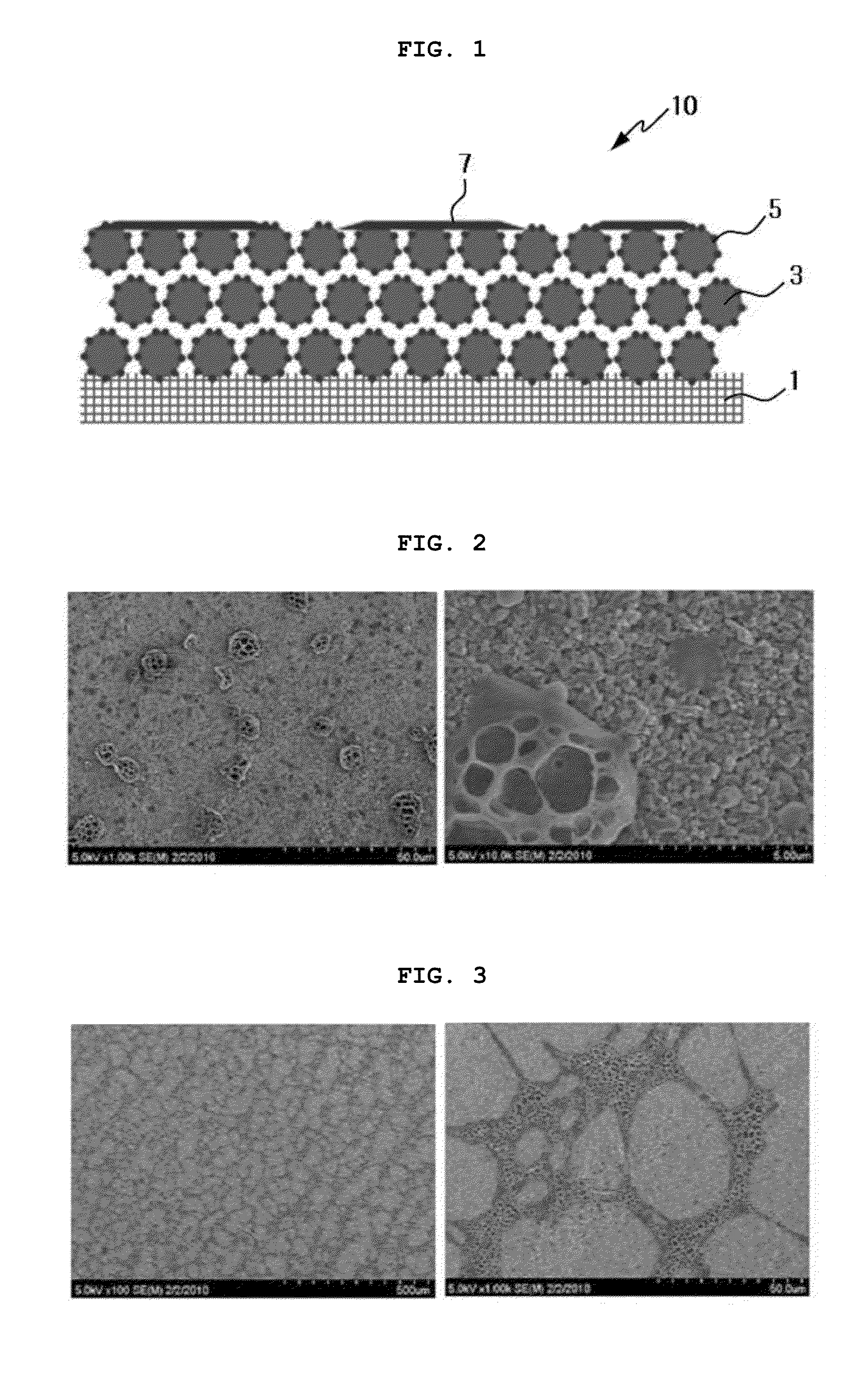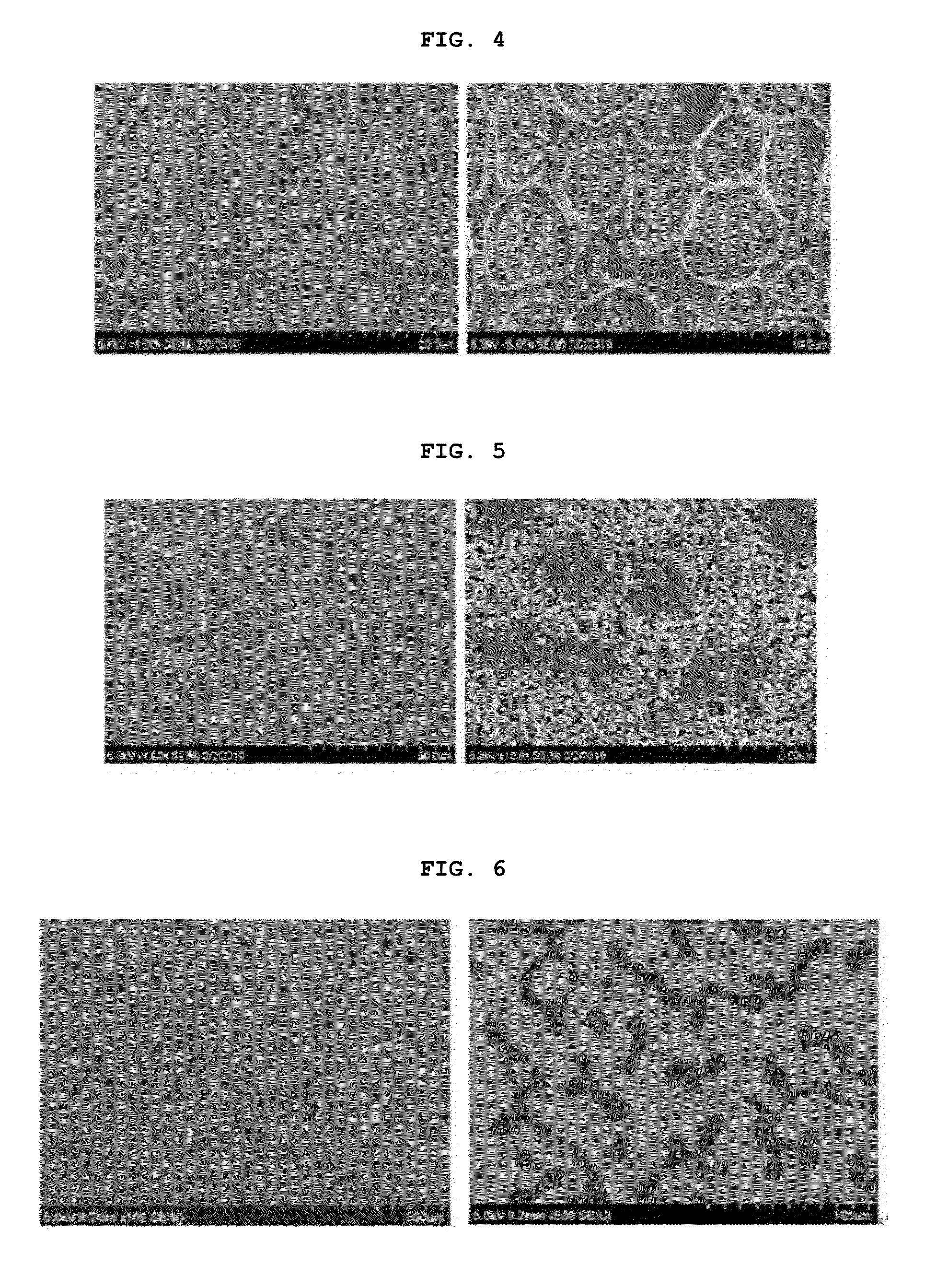Separator, method for producing the same and electrochemical device including the same
a technology of electrochemical devices and separators, applied in the direction of cell components, final product manufacturing, sustainable manufacturing/processing, etc., can solve the problems of insufficient low-temperature discharge capacity, disadvantageous complexity of fabrication, and high safety problems so as to improve the relatively low capacity and low-temperature discharge capacity of lithium ion polymer batteries. , the effect of reducing resistance and good binding ability
- Summary
- Abstract
- Description
- Claims
- Application Information
AI Technical Summary
Benefits of technology
Problems solved by technology
Method used
Image
Examples
Embodiment Construction
12 ± 0.516 ± 0.5Copolymer 10.58 × Dinorg6mole %0.516.0 ± 0.5Example 212 ± 0.516 ± 0.5Copolymer 20.55 × Dinorg6mole %1.016.0 ± 0.5Example 312 ± 0.516 ± 0.5Copolymer 30.57 × Dinorg6mole %2.017.0 ± 0.5Example 412 ± 0.516 ± 0.5Copolymer 20.55 × Dinorg15mole %0.516.0 ± 0.5Example 512 ± 0.516 ± 0.5Copolymer 20.55 × Dinorg15mole %1.016.0 ± 0.5Example 612 ± 0.516 ± 0.5Copolymer 20.55 × Dinorg15mole %1.516.0 ± 0.5Example 712 ± 0.516 ± 0.5Copolymer 20.55 × Dinorg15mole %2.016.3 ± 0.5Comparative12 ± 0.516 ± 0.5Copolymer 20.55 × Dinorg——16.0 ± 0.5Example 1Comparative12 ± 0.516 ± 0.5Copolymer 10.58 × Dinorg6mole %0.116.0 ± 0.5Example 2Comparative12 ± 0.516 ± 0.5Copolymer 20.55 × Dinorg6mole %2.518.0 ± 0.5Example 3Comparative12 ± 0.516 ± 0.5Copolymer 20.55 × Dinorg15mole %0.116.0 ± 0.5Example 4Comparative12 ± 0.516 ± 0.5Copolymer 20.55 × Dinorg15mole %2.517.0 ± 0.5Example 5Comparative12 ± 0.516 ± 0.5Copolymer 20.55 × DinorgCopolymer 21.016.5 ± 0.5Example 6Comparative12 ± 0.516 ± 0.5PVdF-HFP0.38 ×...
PUM
| Property | Measurement | Unit |
|---|---|---|
| temperature | aaaaa | aaaaa |
| operating voltage | aaaaa | aaaaa |
| dielectric constant | aaaaa | aaaaa |
Abstract
Description
Claims
Application Information
 Login to View More
Login to View More - R&D
- Intellectual Property
- Life Sciences
- Materials
- Tech Scout
- Unparalleled Data Quality
- Higher Quality Content
- 60% Fewer Hallucinations
Browse by: Latest US Patents, China's latest patents, Technical Efficacy Thesaurus, Application Domain, Technology Topic, Popular Technical Reports.
© 2025 PatSnap. All rights reserved.Legal|Privacy policy|Modern Slavery Act Transparency Statement|Sitemap|About US| Contact US: help@patsnap.com



